With North Florida congressional district gone, Black voters wonder: 'What happens to us?'
TALLAHASSEE — The caravan took off at dawn, more than a dozen cars and trucks lumbering out of Jacksonville and onto Interstate-10, cutting west toward Tallahassee.
At the wheel of his black Toyota Camry was Ben Frazier, founder and president of the Northside Coalition of Jacksonville, a local group whose mission is to fight for civil rights.
The destination was the Florida Capitol, where the Republican-majority Legislature was starting a three-day special session to supposedly review redrawn congressional maps that Gov. Ron DeSantis wanted to help bolster GOP political power in the nation’s biggest battleground state. It was a foregone conclusion that lawmakers would OK the new maps, which would make it harder for North Florida voters to elect a Black member of Congress.
The 2 ½-hour drive would take Frazier and his protestors through the River City’s grid dotted with skyscrapers, into the farm and forest land of Florida’s northernmost counties along the George border, and up and down Tallahassee’s rolling hills, the towering Capitol like a north star. The stretch of land makes up the fifth congressional district, where nearly half the residents are Black.
'We draw the lines': Black voter advocacy groups mobilize against DeSantis redistricting plan
Lawmakers pass maps: Amid shouts of 'stop the Black attack', Florida lawmakers pass DeSantis congressional redistricting map
Looking ahead: Will Black voters punch back at the polls against Gov. Ron DeSantis over redistricting map?
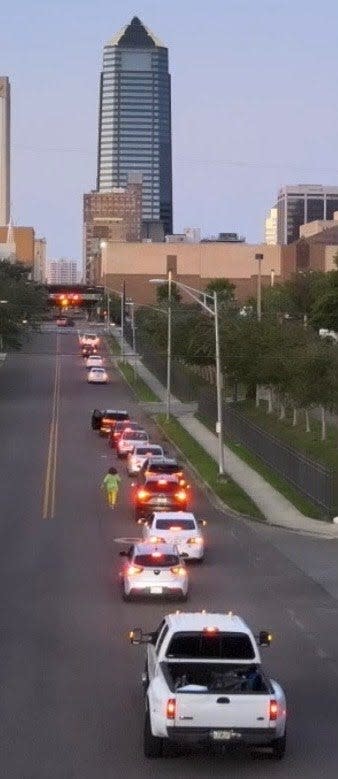
For Frazier, a 71-year-old former TV anchor turned activist, and his fellow protestors, the journey was an opportunity to let the most powerful people in Florida know that the district’s Black voters would not allow this “plain ol’ racist” legislative action to happen without their voices being heard.
After all, the district was more than a map to its residents. It was the product of a long century-old struggle to gain power in the influential halls of Congress.
“This is not just a moment,” he said from a rest stop along the way. “This is a movement.”
A winding history
The congressional district, embroiled in 30 years of political and legal battles, has gone through as many twists and turns as the lines of its boundaries.
The district containing Jacksonville was one of three minority-access districts drawn in 1992 that paved the way for Florida sending its first Black representatives to Congress in 117 years.
Corrine Brown, a Democrat rooted in Jacksonville, joined fellow Democrats Carrie Meeks and Alcee Hastings who won in South Florida districts.
Warren Jones, a former Jacksonville City Council member who now serves on the Duval County School Board, said when he cast his ballot at the Woodstock Community Center that election, the reaction among voters was filled with “a lot of pride,” particularly among older residents who never expected they’d live to see a Black representative.
“It was just a relief that you’d have somebody in Congress who came from the same area you came from and understood the challenges that people of color have, especially in the Black community,” he said.
The 1992 map covered northwest Jacksonville neighborhoods where the city’s biggest concentration of Black residents lived. From there, the district had one tentacle running south to Orlando and another tentacle to Gainesville and Ocala.
The wishbone-shaped district resulted in Black residents making up 50% of the voting-age population, giving them a decisive say in the election outcome.
The state Legislature later redrew the map to drop the Gainesville connection and it morphed into a Jacksonville to Orlando district. The shape of that district faced waves of lawsuits after Florida voters approved two constitutional amendments in 2010 requiring compact districts that don’t favor political parties while ensuring racial minorities have “opportunity districts” for electing candidates of their choosing.
The Florida Democratic Party sued to overturn the congressional map approved by the Legislature and called the Jacksonville to Orlando district the “most gerrymandered in the country.”
Brown fended off that lawsuit, but the Florida League of Women Voters and Common Cause prevailed in a legal challenge. The Florida Supreme Court redrew the district to its current form ahead of the 2016 election: east-west, from Jacksonville to Gadsden County. Black voters make up about 45% of the voting-age population.
Brown, facing a federal trial on corruption charges, lost her re-election to Al Lawson of Tallahassee, who still holds the seat today.
Up until the Legislature's vote this month, the district’s Jacksonville voters knew when they filled Souls to the Polls caravans or showed up on Election Day, they were voting to send a Black representative to Congress.
Al Lawson's roots
In an unprecedented move by a governor, DeSantis, who is widely believed to have White House ambitions, inserted himself into the redistricting process, vetoing the maps drawn by the Legislature and entering his own that lawmakers were largely expected to, and did, pass during the special session along party lines.
The governor’s congressional map gives a strong advantage to his fellow Republicans. It creates 20 districts that favor that party and eight that favor Democrats, realigning the current 16-11 delegation GOP-Democrat split, and erases two congressional districts that had been drawn in a way to help Black voters elect the candidate of their choice.
DeSantis said he sought to create a “race neutral” map and argued that North Florida’s fifth district is an unconstitutional racial gerrymander. Democrats and voting rights advocates decried the move as an egregious overreach that suppresses Black votes, which often lean left, and another blow by a governor who has enacted a series of policies that many perceive as minimizing the influence of Black Floridians.
That outrage is what led Frazier and his group to make the trek that early April 19 morning. As they headed west into Tallahassee, a handful of others headed east from Gadsden County, the fifth district’s western bookend and Florida's only majority-Black county.
It’s also Lawson’s home county. He grew up in Midway, a bedroom community of about 3,500 people off Highway 90, starting as a young boy making $3 a day working in tobacco fields and rising to star athlete and coach, then state lawmaker.
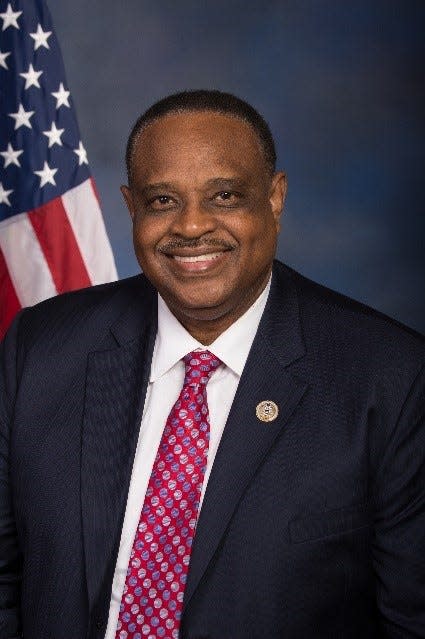
Prior to joining the fifth district, his home county was in a district with neighboring Leon County and a swath of majority white counties. Lawson ran twice for Congress in that district, losing the Democratic Primary in 2010 and the 2012 general election.
Then, the Jacksonville-Gadsden district was born, and in 2016, Florida’s lone majority-Black county got the chance to elect not only a Black representative but one of their own.
“That’s a big deal, to let young people know: if I did it, they can,” Lawson, 73, said in a recent interview. “That’s why it means so much to Gadsden County and the African Americans in the area.”
Local officials there said they’ve enjoyed access to Lawson and appreciate that he understands where they’re coming from, both as a Black Floridian and as someone with a stake in the area.
“This is the first time since I’ve lived in Midway,” said NanDrycka King Albert, a City Council member and resident of 15 years, “that this council has seen some positive improvement.”
Lawson helped secure $2 million for expanding his home city’s Eugene Lamb Recreation Center, one of the community’s few amenities. He also brought home $4.6 million to build the county’s first disaster shelter, said Gadsden Commissioner Brenda Holt. It was a project she’d been trying to fund since Hurricane Michael clobbered the Panhandle in 2018.
“No one has come over here and asked what we wanted,” Holt, 67, said of redistricting. “What happens to us if we go in other districts? What happens to us?”
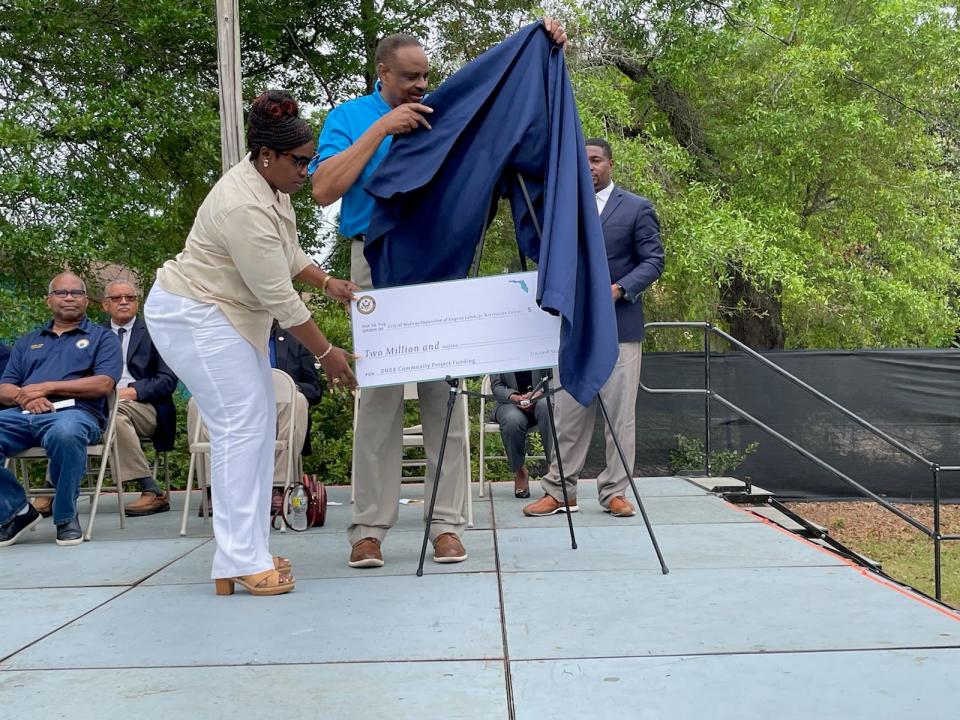
DeSantis' 'critical disconnect'
As Frazier made his way across the state, he thought of past civil rights struggles, the ones he witnessed as a boy in Jacksonville, holding his mother's hand outside the white-only Morrison's Cafeteria as members of the KKK drove by on a flat-bed truck.
This moment felt bigger than just redistricting, he said, pointing to recent policies pushed by DeSantis: a bill cracking down on protests in the wake of Black Lives Matter demonstrations after the death of George Floyd; a voting rights package that a judge recently said was part of a long line of Black voter disenfranchisement; a new law limiting talk of race in schools and workplaces.
"There's a critical disconnect between this governor and African Americans,” he said.
By the time Frazier made it to Tallahassee, dozens of people had gathered by the old Capitol. He took his place on the steps, behind a lectern, as a Black voter group-led rally began. Holt stood a few people down from him. Albert watched from the crowd.
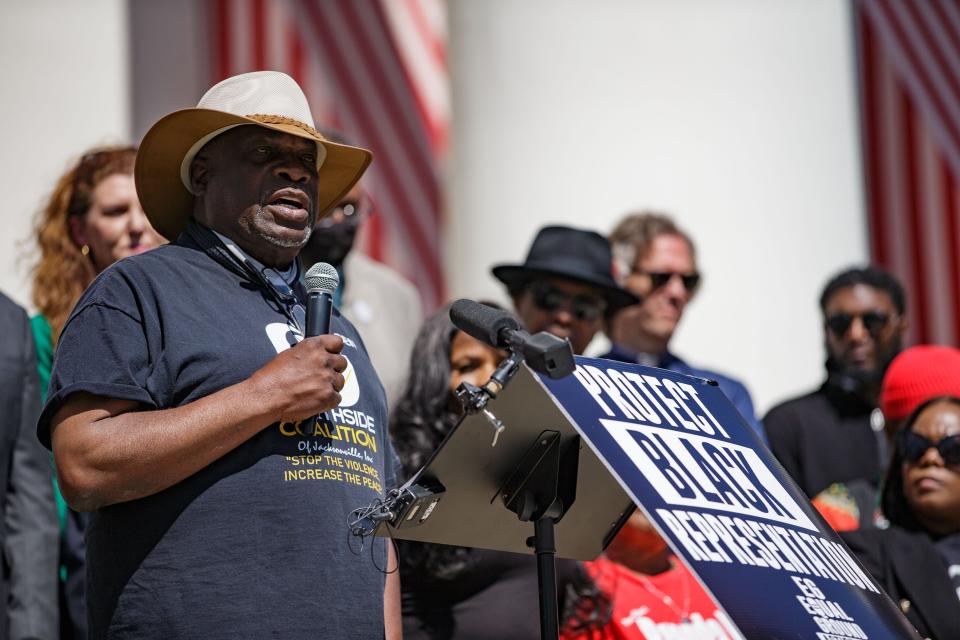
For more than an hour, about 40 activists, faith leaders, and state and local elected officials lambasted the governor and his plan.
"The governor's map of shame is anti-Black, racially uninformed and quite frankly speaking, just plain ol' racist,” Frazier boomed into the microphone, “but this is more than just a story about numbers and statutes. It’s deeper than that. This is truly the story about the hard-fought right to vote.”
Inside the Capitol, the House debate on redistricting also took on that air as frustrations boiled over. Black Democratic state Reps. Angie Nixon, of Jacksonville, and Travaris McCurdy, of Orlando, led a sit-in, stunning Republican lawmakers. It delayed the vote for an hour as Democratic lawmakers sang “We shall overcome” on the House floor.
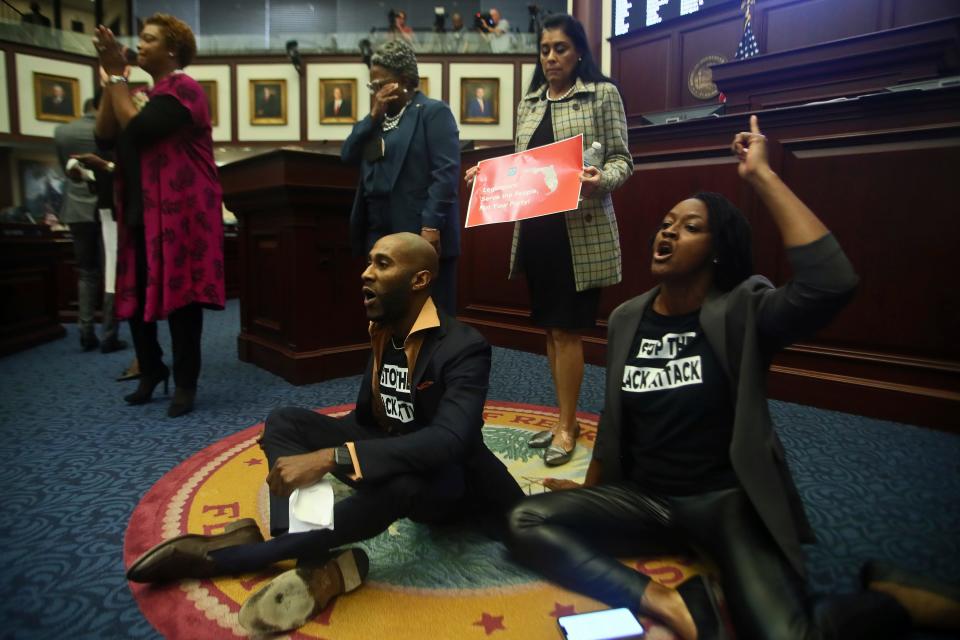
But little could stop what was already in motion. By the end of session, the Jacksonville-Gadsden County district had been wiped from the congressional map.
It splits Duval County in two, with the portion north and west of the St. Johns River coming together with all of Nassau and Clay counties to make the fourth district. Black residents would make up just under 32% of the voting-age population. The overwhelming Republican support in Nassau and Clay will favor Republicans running for Congress in the new district.
The other half of Duval County on the east and south side of the St. Johns River joins St. Johns County in the new fifth district, which also favors Republicans. U.S. Rep. John Rutherford, R-Jacksonville, is seeking re-election in that district where Black residents would be up about 13% of its voting-age population.
Gadsden is swallowed into a district that also favors Republicans. Black residents would make up less than a quarter of the voting-age population.
Next up: Midterms
There may be hope on the horizon for Black voters.
Lawson, in an exclusive interview with the Tallahassee Democrat, said he’s planning to run again in November.
In an interview with Politico, he signaled that he’ll likely challenge Republican incumbent Congressman Neal Dunn of Panama City for district two, which, under the new maps, include Gadsden and Leon counties. Lawson is a familiar face in other parts of the district, too, having represented them in the Legislature for nearly 30 years.
Al Lawson responds after DeSantis upends district: 'My plan right now is to be on the ballot'
Still, that district leans Republican, with Trump taking 55% of the vote in 2020.
Frazier and his caravan of followers knew the political odds were against them and fellow organizers. They knew it was unlikely they could sway Republican lawmakers from changing their minds or that of DeSantis, the party's powerful leader.
Now, with the fifth congressional district disappeared, Frazier looks ahead to the primary in August and midterm election in November. He and the Northside Coalition plan to to register and educate as many Black voters as possible, he said. Holt said she plans to do the same in Gadsden County.
“We need," Holt said, "to make sure we replace the people that don’t respect us."
This article originally appeared on Tallahassee Democrat: Florida redistricting: What do DeSantis' maps mean for Black voters?

